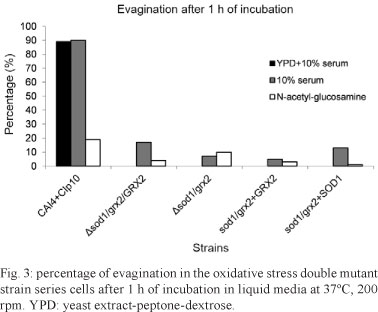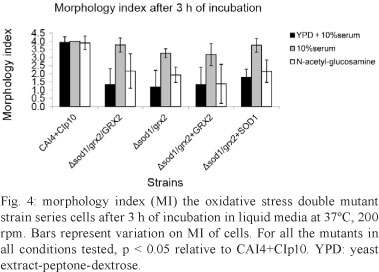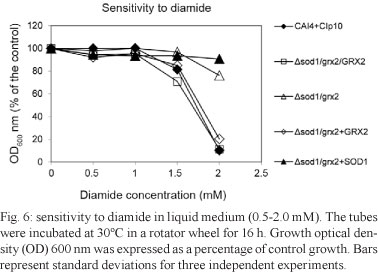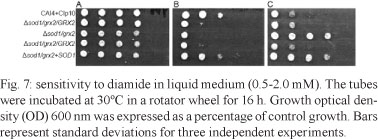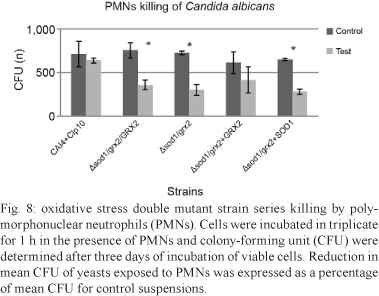To cope with oxidative stress, Candida albicans possesses several enzymes involved in a number of biological processes, including superoxide dismutases (Sods) and glutaredoxins (Grxs). The resistance of C. albicans to reactive oxygen species is thought to act as a virulence factor. Genes such as SOD1 and GRX2, which encode for a Sod and Grx, respectively, in C. albicans are widely recognised to be important for pathogenesis. We generated a double mutant, Δgrx2/sod1, for both genes. This strain is very defective in hyphae formation and is susceptible to killing by neutrophils. When exposed to two compounds that generate reactive oxygen species, the double null mutant was susceptible to menadione and resistant to diamide. The reintegration of the SOD1 gene in the null mutant led to recovery in resistance to menadione, whereas reintegration of the GRX2 gene made the null mutant sensitive to diamide. Despite having two different roles in the responses to oxidative stress generated by chemical compounds, GRX2 and SOD1 are important for C. albicans pathogenesis because the double mutant Δgrx2/sod1 was very susceptible to neutrophil killing and was defective in hyphae formation in addition to having a lower virulence in an animal model of systemic infection.
Candida albicans; superoxide dismutases; glutaredoxins; phagocytosis; virulence



